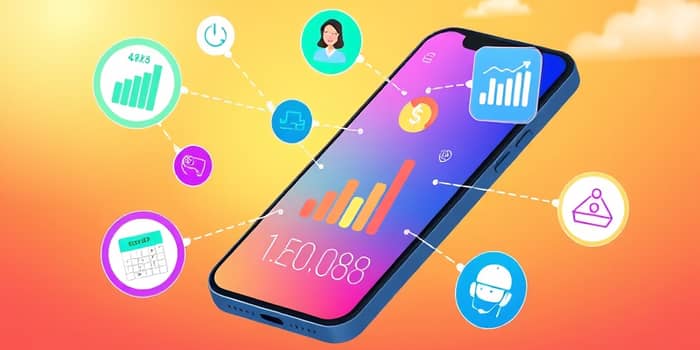
In an era of rapid digital transformation, managing personal finances has evolved from paper ledgers to sophisticated mobile applications. Today’s consumers are demanding more than just payment processing—they want comprehensive financial management at their fingertips. By choosing payment apps that seamlessly integrate with budgeting tools, individuals can achieve an unprecedented level of clarity, control, and peace of mind.
Integration is the key to unlocking a truly streamlined financial management experience. No longer must you juggle multiple platforms or manually reconcile transactions. When payments and budgeting coexist in one unified environment, your financial journey becomes simpler and more insightful.
The global market for smart budgeting apps is projected to reach a staggering $6.6 billion by 2034, growing at an annual rate of 18.4%. In the U.S., the market already exceeds $0.39 billion, with a forecasted CAGR of 16.8%. These figures underscore a powerful trend: users crave intelligent, connected financial solutions.
Several forces are driving this adoption:
As users demand better visibility into their spending, integration emerges as a non-negotiable feature. In a recent survey, 65% of respondents expressed a desire for tighter convergence between payment and budgeting apps, while over half lamented a lack of advanced security measures.
Understanding how different segments use financial apps illuminates the critical need for integrated solutions:
These patterns reveal a shared challenge: too many apps, too much manual effort, and insufficient security. A unified platform addresses these issues by offering automatic expense tracking and categorization in real time.
Leading apps combine payments with budgeting through several innovative capabilities:
These features work together to provide a holistic financial snapshot. Imagine receiving a voice alert when you’re about to exceed your dining-out budget or having your savings goals updated after every transaction—all without manual entry.
By converging payment and budgeting tools, integration delivers concrete benefits:
Users report feeling more confident about their financial decisions when they can visually track spending trends, forecast upcoming costs, and receive timely alerts. Furthermore, integration helps combat financial blind spots and wallet fatigue—those moments when unexpected expenses derail your budget.
Despite the appeal of integration, many users remain cautious about linking their accounts. Studies show that 56.2% of respondents consider advanced security features a top priority. To build trust, apps must:
When these safeguards are in place, users can feel secure granting permissions—and enjoy the benefits of a truly unified financial platform.
Certain demographics are especially drawn to integrated payment-budgeting apps:
By tailoring features such as predictive budgeting and automated savings, integrated apps offer targeted support where it’s needed most.
To maximize the value of payment–budgeting integration, consider these guidelines:
Adhering to these practices ensures that you harness the full power of integration while safeguarding your information.
The convergence of payments and budgeting marks a pivotal shift in how we engage with money. What once required a tangle of spreadsheets and multiple logins can now be managed through a single intuitive interface. As technology continues to advance, we can anticipate even deeper integration—perhaps with investment portfolios, insurance services, and peer-to-peer lending platforms, all within one super app.
By adopting payment apps that integrate seamlessly with budgeting tools, you’re not just simplifying your financial routine—you’re embracing a proactive approach to money management. With real-time insights and automated guidance, you can navigate market shifts, control spending, and pursue your financial goals with confidence. The future of personal finance is integrated, intelligent, and incredibly empowering—so make the switch today.
References













